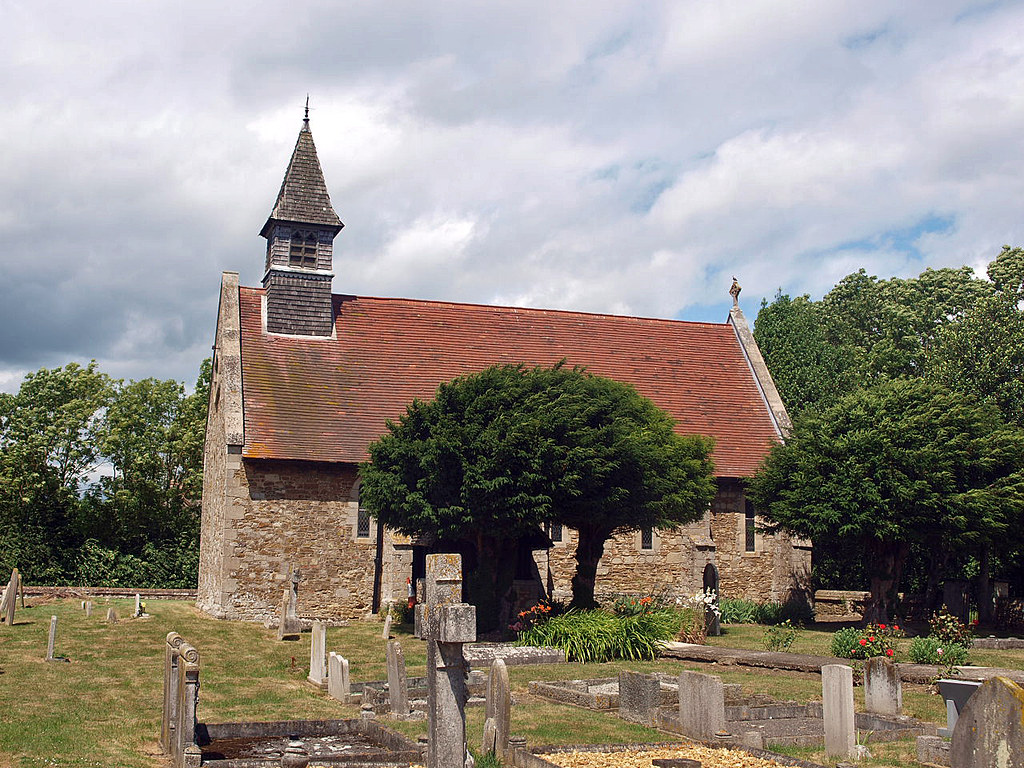ST MICHAEL. Small E.E. chapel, of nave and chancel without structural division. Buttresses with one set-ofl‘; lancet windows, also at the W end, where above the lancet is a sexfoil window in a circle, renewed but, it is said, correctly. - SCULPTURE. In the vestry four Norman pieces of unknown provenance. Two are parts of capitals, of quite a big size, about 10 in.wide in the front. One has chip-carving, the other volutes and a small seated figure. A third, smaller capital, is scalloped. Also a lion from a corbel-table. What did all this belong to? - FONT. Perp, octagonal, with shields in quatrefoils. - PLATE. Cup and Cover of 1569.
CHETTISHAM. The oldest thing the village has is a grotesque head carved by a Norman sculptor; it is built into the vestry wall of the church which comes from the first days of our English builders 750 years ago. With the head are three small capitals, probably from about the same time, one with scallop carving, and one with stars, the other a quaint little man meditating by a tree, his head on his hand and his legs crossed. Ely, with its great cathedral, is but two miles away, and this small shrine was a chapel of St Mary at Ely, seeming to cling to the skirts of its powerful neighbour. It has a shingled turret and a series of pointed lancets in which are beautiful Madonnas, the archangel Michael in a blue cloak with gold wings, and a fine Good Shepherd with a red and white cloak in memory of a vicar who lived in every decade of the 19th century and in the first decade of ours. There are ancient tiebeams in the roof, and the font is 15th century.

No comments:
Post a Comment